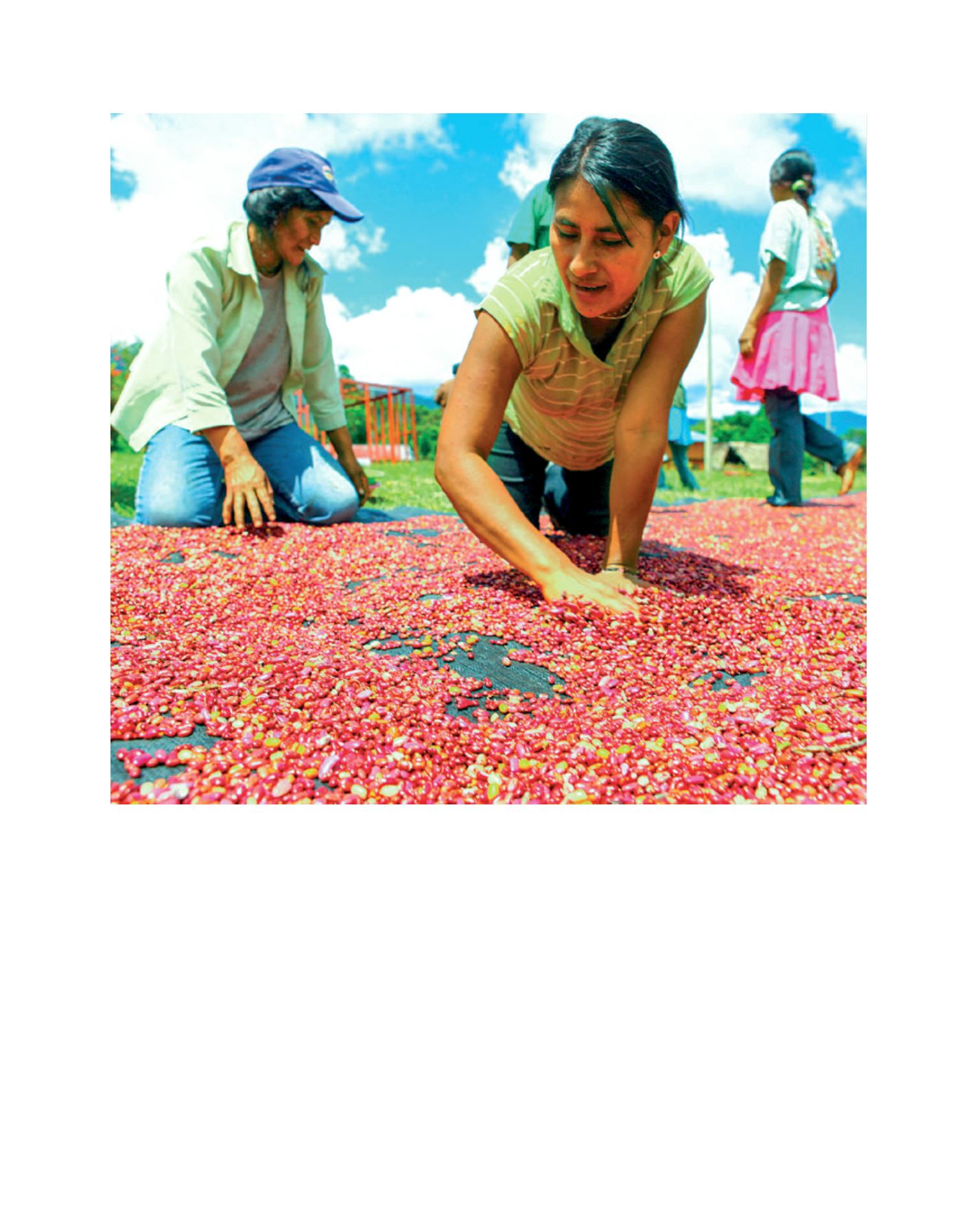

[
] 35
Image: Percy Ramírez, Oxfam America
Luz Sinarahua, president of the women’s group that maintains the traditional garden in Chirikyacu, spreads out a fresh harvest of beans to dry in the sun in Peru
heavily focused on increasing production, mostly under the
slogan ‘more with less’.
3
This approach is still very much
biased towards the expansion of ‘somewhat less polluting’
industrial agriculture, rather than more sustainable and
affordable diversified food production in rural areas.
Generally, such an approach focuses on the intensive use
of chemical inputs and the concentration of farming on
a handful of dominant crops in monocultures. Industrial
agriculture is also a main contributor to greenhouse gas
emissions at a time when governments have to commit
to deep cuts in emissions to stay below 1.5 degrees of
warming.
4
Although this type of agriculture is often framed
as a solution, it doesn’t account for the real-world heteroge-
neity and complexity of agriculture, the limited resources
most farmers, especially women, have access to and the
increased vulnerability many farmers face due to climate
change. As every farmer will tell you, every plot is differ-
ent. To put it bluntly, this approach is failing farmers who
most need support.
There are alternatives. Practices based on agroecological
principles – aligning agricultural practices and strategies
with natural systems and with traditional knowledge –
have multiple values and deliver real results. For example,
agroecological approaches can help to maintain genetic
diversity the raw material on which breeding for increased
production and greater resilience depends. Further loss
of genetic diversity in plant crops and animal breeds is
dangerous. It makes our food supply more vulnerable to
outbreaks of pests and diseases and to loss of capacity to
adapt to changing climatic conditions. Agroecology can
help to safeguard traditional seed varieties that are impor-
tant sources of diversity.
5
D
eep
R
oots
















